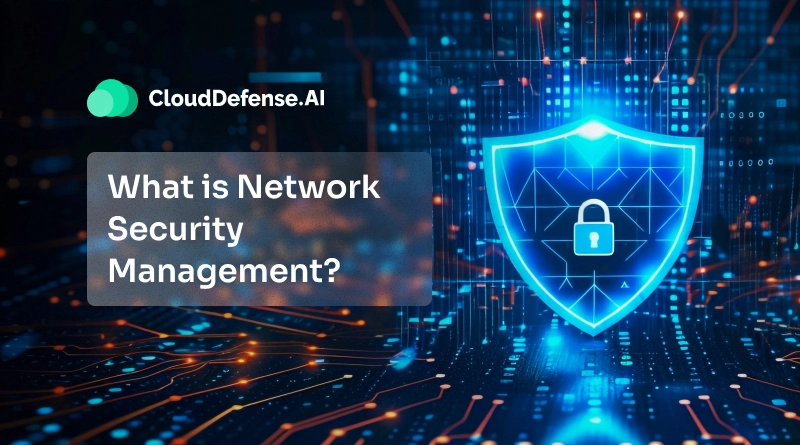What is Network Security Management?
In today’s digital-first environment, cyber threats are growing more sophisticated, making network security management (NSM) a crucial aspect of any organization’s cybersecurity strategy. A well-structured NSM system enables businesses to monitor, control, and secure their network infrastructure efficiently, ensuring protection against cyberattacks, data breaches, and unauthorized access. This article delves into what network security management is, why it’s essential, and how it strengthens business security. Understanding Network Security Management At its core, Network Security Management is a centralized system designed to streamline and automate security processes across an organization’s entire network. It allows businesses to: Oversee multiple firewalls and security policies from a single interface. Monitor and control network traffic to prevent suspicious activities. Automate security updates to reduce human errors. Detect threats in real-time and respond before they escalate. Ensure compliance with security regulations and industry standards. By integrating various security tools, NSM provides businesses with a holistic view of their network security, ensuring consistent protection and faster incident response times. Why is Network Security Management Important? Managing network security manually can be a daunting task, especially as networks grow in complexity. Without a centralized solution, organizations face several challenges: 1. Increased Risk of Human Error Manually configuring security settings across multiple firewalls and access points increases the likelihood of misconfigurations, which can leave networks vulnerable to attacks. 2. Lack of Real-Time Threat Detection Cyber threats evolve constantly. A traditional security approach often fails to detect sophisticated cyberattacks in real time, leading to delayed responses and greater damage. 3. Time-Consuming Security Management Managing security manually across different locations and tools is inefficient, draining IT resources and diverting attention from strategic security initiatives. 4. Inconsistent Security Policies When security policies aren’t updated or uniformly applied, inconsistencies arise, increasing the risk of policy conflicts and security loopholes. To overcome these challenges, network security management provides an automated, proactive, and centralized approach to security, reducing risks and improving efficiency. How Network Security Management Works A robust NSM system functions as a command center that integrates with various security tools across the network. Here’s how it operates: 1. Centralized Control & Visibility All security functions—firewalls, threat detection, and access controls—are managed from a unified dashboard, eliminating the need for manual configuration across multiple systems. 2. Real-Time Monitoring & Threat Detection The system analyzes network traffic to detect unusual patterns, flagging suspicious activity before it escalates into a full-blown security breach. 3. Automated Security Policy Enforcement Security policies are applied consistently across all network components, ensuring uniform compliance and protection without manual intervention. 4. Proactive Threat Response When an attack is detected, NSM can automatically block threats, isolate compromised devices, and alert security teams, minimizing damage. 5. Comprehensive Reporting & Compliance Management The system generates detailed reports on security events, helping businesses track compliance with industry regulations and optimize their security strategies. Key Security Tools Integrated with NSM A strong NSM framework leverages various security tools to build a multi-layered defense against cyber threats: Firewalls – The first line of defense, blocking unauthorized access and filtering network traffic. Intrusion Detection & Prevention Systems (IDS/IPS) – Identifies and stops potential threats before they cause harm. Vulnerability Scanners – Detects weaknesses in applications and network infrastructure. Security Information & Event Management (SIEM) – Aggregates security logs to provide threat intelligence and improve response time. Network Access Control (NAC) – Ensures that only authorized users and devices can connect to the network. Data Loss Prevention (DLP) – Monitors sensitive data to prevent leaks or unauthorized access. Antivirus & Endpoint Protection – Protects devices and endpoints from malware and ransomware threats. VPN (Virtual Private Network) – Encrypts remote connections to secure data transmission over the internet. By combining these tools, network security management strengthens an organization’s ability to detect, prevent, and respond to cyber threats effectively. How NSM Enhances Business Security A well-implemented NSM system doesn


In today’s digital-first environment, cyber threats are growing more sophisticated, making network security management (NSM) a crucial aspect of any organization’s cybersecurity strategy. A well-structured NSM system enables businesses to monitor, control, and secure their network infrastructure efficiently, ensuring protection against cyberattacks, data breaches, and unauthorized access.
This article delves into what network security management is, why it’s essential, and how it strengthens business security.
Understanding Network Security Management
At its core, Network Security Management is a centralized system designed to streamline and automate security processes across an organization’s entire network. It allows businesses to:
- Oversee multiple firewalls and security policies from a single interface.
- Monitor and control network traffic to prevent suspicious activities.
- Automate security updates to reduce human errors.
- Detect threats in real-time and respond before they escalate.
- Ensure compliance with security regulations and industry standards.
By integrating various security tools, NSM provides businesses with a holistic view of their network security, ensuring consistent protection and faster incident response times.
Why is Network Security Management Important?
Managing network security manually can be a daunting task, especially as networks grow in complexity. Without a centralized solution, organizations face several challenges:
1. Increased Risk of Human Error
Manually configuring security settings across multiple firewalls and access points increases the likelihood of misconfigurations, which can leave networks vulnerable to attacks.
2. Lack of Real-Time Threat Detection
Cyber threats evolve constantly. A traditional security approach often fails to detect sophisticated cyberattacks in real time, leading to delayed responses and greater damage.
3. Time-Consuming Security Management
Managing security manually across different locations and tools is inefficient, draining IT resources and diverting attention from strategic security initiatives.
4. Inconsistent Security Policies
When security policies aren’t updated or uniformly applied, inconsistencies arise, increasing the risk of policy conflicts and security loopholes.
To overcome these challenges, network security management provides an automated, proactive, and centralized approach to security, reducing risks and improving efficiency.
How Network Security Management Works
A robust NSM system functions as a command center that integrates with various security tools across the network. Here’s how it operates:
1. Centralized Control & Visibility
All security functions—firewalls, threat detection, and access controls—are managed from a unified dashboard, eliminating the need for manual configuration across multiple systems.
2. Real-Time Monitoring & Threat Detection
The system analyzes network traffic to detect unusual patterns, flagging suspicious activity before it escalates into a full-blown security breach.
3. Automated Security Policy Enforcement
Security policies are applied consistently across all network components, ensuring uniform compliance and protection without manual intervention.
4. Proactive Threat Response
When an attack is detected, NSM can automatically block threats, isolate compromised devices, and alert security teams, minimizing damage.
5. Comprehensive Reporting & Compliance Management
The system generates detailed reports on security events, helping businesses track compliance with industry regulations and optimize their security strategies.
Key Security Tools Integrated with NSM
A strong NSM framework leverages various security tools to build a multi-layered defense against cyber threats:
- Firewalls – The first line of defense, blocking unauthorized access and filtering network traffic.
- Intrusion Detection & Prevention Systems (IDS/IPS) – Identifies and stops potential threats before they cause harm.
- Vulnerability Scanners – Detects weaknesses in applications and network infrastructure.
- Security Information & Event Management (SIEM) – Aggregates security logs to provide threat intelligence and improve response time.
- Network Access Control (NAC) – Ensures that only authorized users and devices can connect to the network.
- Data Loss Prevention (DLP) – Monitors sensitive data to prevent leaks or unauthorized access.
- Antivirus & Endpoint Protection – Protects devices and endpoints from malware and ransomware threats.
- VPN (Virtual Private Network) – Encrypts remote connections to secure data transmission over the internet.
By combining these tools, network security management strengthens an organization’s ability to detect, prevent, and respond to cyber threats effectively.
How NSM Enhances Business Security
A well-implemented NSM system doesn’t just protect against cyberattacks—it also ensures business continuity, regulatory compliance, and customer trust.
1. Safeguards Confidential Data
NSM prevents data breaches, unauthorized access, and insider threats, ensuring that sensitive business information remains protected.
2. Minimizes Downtime & Disruptions
A cyberattack can cripple business operations, leading to financial losses. By proactively detecting and neutralizing threats, NSM minimizes downtime and ensures continuous network availability.
3. Ensures Compliance with Security Regulations
Businesses operating in regulated industries must comply with strict security standards (e.g., GDPR, HIPAA, SOC 2). NSM helps enforce these regulations, reducing legal risks and penalties.
4. Enhances Customer Confidence
Customers expect their data to be secure. A strong NSM framework builds trust and credibility, demonstrating that the business takes security seriously.
5. Reduces Operational Costs
By automating security tasks, NSM lowers IT workload, reduces human errors, and prevents costly cyber incidents, optimizing security investments.
Is Network Security Management Right for Your Business?
If your organization struggles with security inconsistencies, frequent cyber threats, or complex network infrastructure, implementing NSM can provide significant benefits.
Ask yourself these key questions:
- Is my IT team overwhelmed with security management tasks?
- Do I need better visibility into my network traffic and security threats?
- Are my firewalls and access controls consistently updated?
- Am I prepared for real-time cyber threats and compliance audits?
- Would automation improve my security efficiency and response time?
If the answer is yes, then investing in Network Security Management will enhance security, improve efficiency, and safeguard your business against evolving threats.
Final Thoughts
Cybersecurity threats are growing more complex, and traditional security methods are no longer sufficient. Network Security Management offers a centralized, automated approach to monitor, control, and protect an organization’s digital assets.
By integrating firewalls, threat detection, and automated security enforcement, NSM enables businesses to proactively combat cyber threats, reduce risks, and ensure regulatory compliance.
Securing your network isn’t optional—it’s a necessity. Implementing NSM today can help future-proof your business and maintain a resilient security posture.
Stay ahead of cyber threats. Strengthen your security with Network Security Management.









































































































































































![[The AI Show Episode 142]: ChatGPT’s New Image Generator, Studio Ghibli Craze and Backlash, Gemini 2.5, OpenAI Academy, 4o Updates, Vibe Marketing & xAI Acquires X](https://www.marketingaiinstitute.com/hubfs/ep%20142%20cover.png)


























































































































![[FREE EBOOKS] The Kubernetes Bible, The Ultimate Linux Shell Scripting Guide & Four More Best Selling Titles](https://www.javacodegeeks.com/wp-content/uploads/2012/12/jcg-logo.jpg)



![From drop-out to software architect with Jason Lengstorf [Podcast #167]](https://cdn.hashnode.com/res/hashnode/image/upload/v1743796461357/f3d19cd7-e6f5-4d7c-8bfc-eb974bc8da68.png?#)







































































































.png?#)




.jpg?#)




















 (1).webp?#)











_Christophe_Coat_Alamy.jpg?#)








































































































![Rapidus in Talks With Apple as It Accelerates Toward 2nm Chip Production [Report]](https://www.iclarified.com/images/news/96937/96937/96937-640.jpg)








































































































































